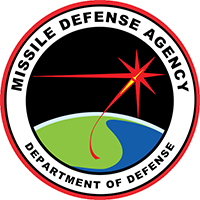News Articles
 |
May 25, 2008
Missile Defense Agency Leads Way to Fiberless Data Made Easy
by L. Scott Tillett
A technology with a history of funding from the missile defense program has spawned a new product that should make high-speed, broadband wireless data communications easier and more viable for new users. The product, developed by a subsidiary of Trex Enterprises Corporation (San Diego, CA), is a line-of-sight, millimeter-wave radio system that will compete with fiber-optic cable, offering data rates as high as 1.5 gigabits per second (Gbps)-the equivalent of transmitting the contents of a standard DVD in about 25 seconds.
The new offering, known as the L1000, is being marketed by Trex subsidiary Loea Corporation as a multirate product, meaning that the system also could work easily with more commonplace wireless networks that operate at 125 megabits (Mbps) per second (about one-twelfth the speed of a 1.5-Gbps network). The product recently received FCC certification.
The idea, according to Loea leaders, is to give users an easily configurable product that can plug into almost any network to create a fiberless link. Adding the L1000 to a network could allow city governments, for example, to beam data quickly among downtown office buildings instead of having to tear up streets to install fiber-optic cables. Or the new product could enhance high-speed data communications in other environments where running cable can prove costly or disruptive. Network overseers at universities, military bases, and other campus-like environments could find the L1000 useful. The product has been designed to operate with commercial off-the-shelf switches, routers, and encryption devices, according to Trex officials.
Trex, which previously has operated under the names Thermoelectron Technologies Corporation and ThermoTrex Corporation, has a long history of funding from missile defense programs. BMDO, a predecessor of MDA, originally awarded the company a series of Innovative Science & Technology contracts to develop communications systems that could transmit audio and video data at high rates. As the company worked on the various projects, the focus fell on millimeter-wave tech-nology, which transmits data at extremely high frequencies and offers greater bandwidth capabilities than microwave communications.
Commercial jumpstarter
For several years, Loea has been turning out commercially available data-communications systems built around its BMDO-funded technology. Loea products typically include a 2-foot dish for transmitting and receiving data. But the L1000 goes in a new direction. The product, which resembles a hobbyist telescope, has a 10-inch lens that serves as the antenna. Tom Fargo, a retired U.S. Navy admiral who serves as chairman and CEO of Loea, said the key to jumpstarting adoption of millimeter-wave technology is ease of use and affordability.
"By making it a little smaller, a little simpler, a little easier to align, and by reducing the cost-the cost has come down by over 60 percent-we are able to put it in more locations and adapt it to more applications," he said. Loea has set the U.S. list price for the L1000 at $24,000, which includes two antennas, each weighing only 12 pounds.
Company officials said the product requires no elaborate or expensive mounting gear. By comparison, using a more traditional fiber-optic connection instead of the L1000 could cost users as much as $70,000 per mile (1.6 kilometers) just to trench the fiber-optic cable, according to Loea. As another example, company officials researched and determined that the average cost to connect a cell-phone base station using fiber is about $300,000, compared with less than $30,000 to connect the station using Loea's products.
"Eventually, as people demand video and imagery over wireless circuits, you are going to have to get up into the [gigabit-per-second] range, so you've got to drive the price down so the telecom industry will find this as a reasonable alternative," said Fargo, explaining that wireless phone-service providers should find the technology especially useful for expanding and enhancing their networks. "And we'd like them to use it now as opposed to waiting until they absolutely have to have more bandwidth."
Addressing standards
The L1000 system produces 100 milliwatts of output power and operates in the radio-frequency band of 71-76 gigahertz (GHz), as well as the 81-86 GHz band. As the system transmits and receives data, the width of the data beam holds steady within a range of 1.2 degrees. The other dish-based Loea products, by comparison, have a tighter "pencil-beam" beam width of 0.42 degrees.
Loea maintains that the L1000 will perform well in all weather, with a 99.999 percent availability at distances greater than 1 kilometer. The product is compatible with data infrastructures and standards such as Sonet, Internet Protocol, Gigabit E, and other standard or proprietary data rates between 125 Mbps and 1.5 Gbps. Trex and Loea have about 10 patents that cover the core technology behind the L1000 and its sister products. The companies have another handful of patent filings working their way through the approval process.
The companies are not alone in their pursuit of fiber-like capabilities via high-frequency wireless technology. But Fargo said he believes price and ease of use will distinguish the L1000 from other products competing in the market.
The L1000 joins an existing line of Loea's products that already has been used by customers such as the U.S. naval base at Pearl Harbor. Loea's products also have been used in a metropolitan area network for Santa Fe, NM, and for high-definition television "backhaul" communications for Super Bowl XXXVII (2003), transmitting data between remote sites and a central site.
Loea has deployed about 100 links throughout the United States and Mexico while working with customers in application areas such as enterprise architectures, telecommunications, cellular backhaul communications, and remote data storage, as well as military and emergency-responder communications.
This article originally appeared in "MDA TechUpdate," a quarterly newsletter published by the Missile Defense Agency's Technology Applications (TA) program. The TA program offers a range of services to MDA-funded researchers to help them commercialize their technologies. For information about the program, contact the National Technology Transfer Center - Washington Operations at 703-518-8800 or techapps@nttc.edu.